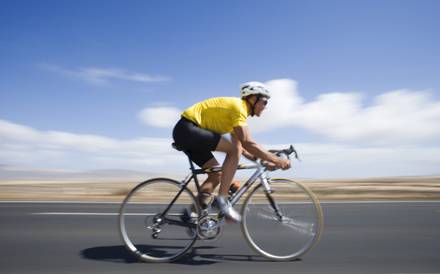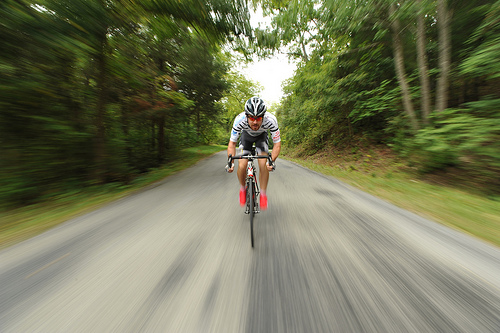You may not need to be able to relax into an advanced yoga position, or fold yourself into a human pretzel, but a certain amount of flexibility is important for all athletes. Cycling in particular can lead to short, tightened muscles because of the constant pedaling with little to no range of motion. Not only is the position on the bike restricting, but you also need to be able to maintain the correct posture to prevent injury. So yes, flexibility for cyclists is a very important element.

Why does cycling make your muscles stiff?
Besides the naturally occurring muscle soreness that comes from exercise and the buildup of lactic acids, cycling can cause body stiffness in other ways. First of all, if you stay in any one position, whether sitting or standing, for an extended period of time it can cause stiffness. You are in a bent-over, forward position for hours at a time, with the position itself acting to shorten the muscles. Yes it is great cardio and it will make you stronger, but the motion is using the same muscles over and over in the same way.
Think about when you are on your bike pedaling. You legs are never quite fully extended or flexed, limiting the joints range of motion. You are effectively contracting your muscles while shortening, rather than when you’re lengthening, which can in time lead to what is known as adaptive shortening. Most common in road cyclists is the tightening and shortening of the hip flexors and hamstrings, which can lead to issues in the legs and lower back.
Why is flexibility for cyclists important?
Flexibility, or rather inflexibility, can lead to unbalance in the body and even cause the body’s structure to move out of alignment. Failing to properly stretch and maintain flexibility can not only affect you performance, but it will inevitably lead to injury and discomfort.
1. Performance and Comfort
If you are concerned with getting into as aerodynamic position as possible on your bike, then you need to be flexible. To lean low down on your handlebars while driving power from you legs, you have to be able to get into the position in the first place. For example, tight or shortened hamstrings will make the aerodynamic position impossible and tight calves can limit the power of your pedal strokes.
Comfort on the bike does take time, but what you do off the bike plays a huge role. To improve your performance you have to work to reverse the cycling posture off the bike, and maintain a strong core. Regular stretching and cross training can be important in maintaining your overall health, as well as ensure you are the best you can be in the bike.

2. Injury Prevention
Maintaining proper posture on your bike can go a long way to prevent injury. The natural inclination is to round your back as you crane your head to look forward. Not only does this create drag, but it will eventually cause pain in your lower and upper back and neck.
Everything in your body is connected. So, to maintain proper bike posture you have to have adequate flexibility in your lower back, hips, glutes, and hamstrings. The flatter your back can be, the less issues you’ll come up against in your training.
As mentioned previously, the repetitive motion on the bike results in strength in certain muscles, but can cause the unused muscles and joints to become weak and vulnerable to injury. It takes stretching to maintain long muscles, as well as strength training to ensure your core is up to the task of keeping that proper position on the bike.


